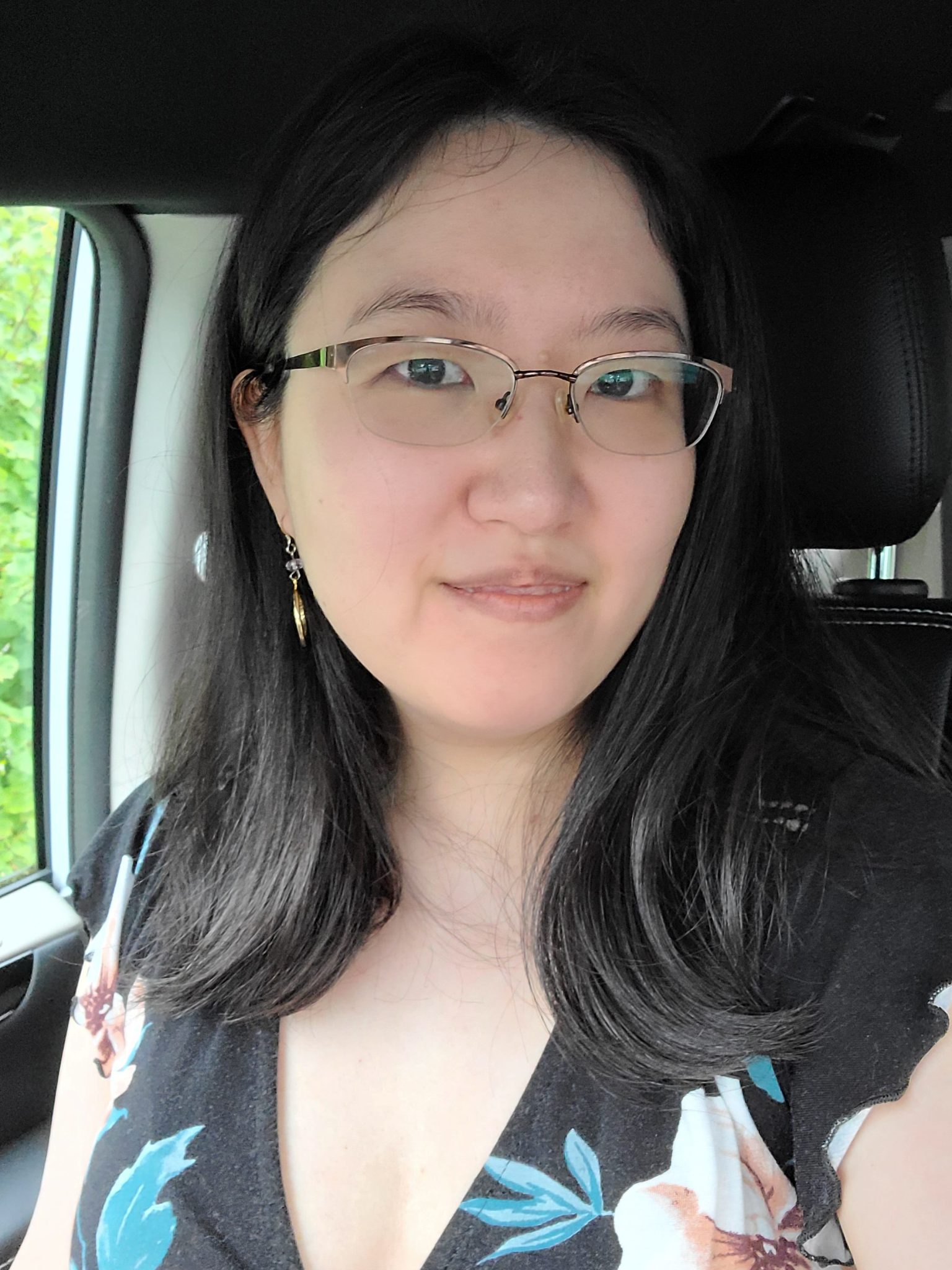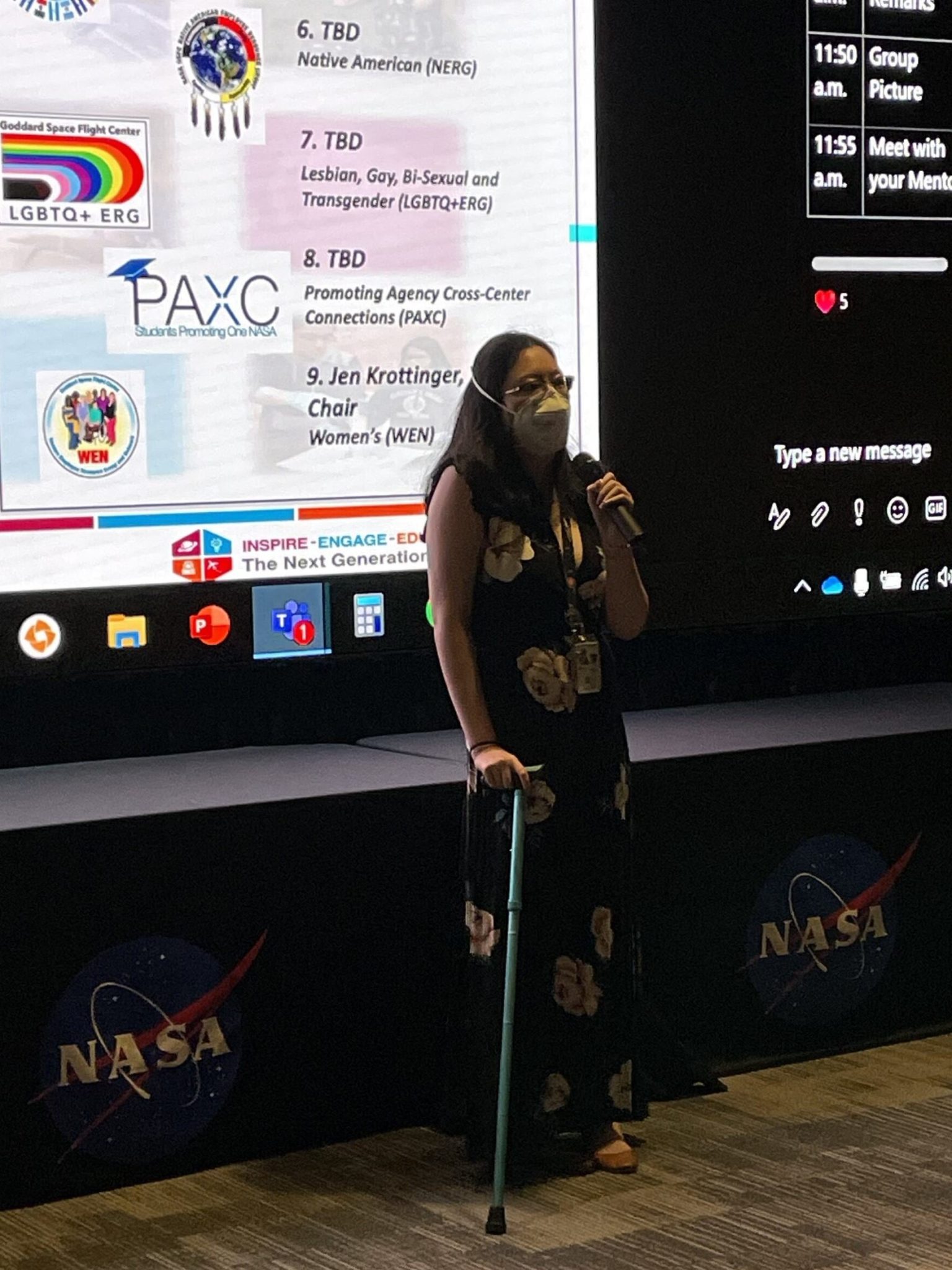Kiyun Kim began at Goddard as a summer intern. Impressed by the center's community bonds, Kim is now co-chair of a center resource group that champions accessibility and inclusivity.
Name: Kiyun Kim
Title: Software Engineer
Organization: Ground Software Systems Branch (Code 583)

What do you do at Goddard Space Flight Center?
I'm a software engineer on the ground software systems branch. We do all the software work that stays on the ground and does not go up into space. We do things like software that helps us coordinate stuff on the ground, helps us contact with the satellites, do scheduling, process data, all sorts of things like that. What I do at any given time depends on what project I'm under.
The main thing that I've been working on lately is a tool for database checkouts. There are different versions of the database for each satellite and what we want to be able to do is validate those databases and also to look at the changes between databases and compare them to each other.
In the past, I've also worked on a contact scheduling tool - when you have a bunch of different satellites, they're kind of staggered in orbit, so normally, their signals wouldn't run into each other, so to speak, when you're getting the downlinks from them. But when you have a project that is sharing ground resources with other projects, other organizations, the way that Joint Polar Satellite System is, you sometimes have to work to prevent conflicts between satellites. What we're trying to do is maximize the amount of downlinks for each mission in line with what they need.
Prior to that I was on Goddard Mission Services Evolution Center, or GMSEC. It's a framework so that missions can take care of all the communication between all the different parts of their systems. So for example, each mission can use GMSEC and take the built in components that GMSEC offers or build their own components and just plug them into GMSEC and they'll all talk to each other using GMSEC.
Specifically, I worked on the web interface for that and made a countdown clock for it, modeled after the Magnetospheric Multiscale Mission (MMS).
What led you to working at NASA?
I was looking for internships as a college student and my dad found the NASA summer internship program and encouraged me to apply. I got in and I had a really great time.
What have you enjoyed most about working at NASA?
One thing that I've really appreciated is the work-life balance aspect, and also the fact that I don't have to give up learning new things in order to fulfill my job. Obviously if I have a deadline, I can't go to the on-center talks and stuff, but the fact that there are all these talks on different subjects, I really like that I'm able to just go, and that I'm supported in doing that.
I still consider myself early in my career and there's so much that I just don't know about on center. I know of the kinds of things that I've been working on, obviously, but I don't necessarily get exposed to everything else in my day-to-day work. Having the opportunity to see what else is going on on-center is also good for, beyond just sating my curiosity, it's also good for helping me figure out what I want to do with my life.
Is there anything you didn't expect when you started as an intern?
I was surprised by how warm people would be. I remember a very defining experience for me as an intern, was I was walking to get lunch one day from the cafeteria, and I ran into someone who I didn't know and she stopped and because she saw my intern badge started talking with me. We ended up talking like out in the hot sun for like an hour. Later she invited me to lunch while I was still an intern, and she came to my intern presentation. She was actually from the Women's Employee Resource Group. She wasn't explicitly trying to recruit me, but she was just so excited to see a new face and reach out to me and make sure that I felt welcome. That was just like a really defining experience for me and I think it solidified that this was the kind of place I wanted to work at.

Are you involved in any groups on campus?
I'm one of the co-chairs of the Equal Accessibility Employee Resource Group. I admit that sometimes my own disabilities make it difficult for me to be as active as I would like, but I feel very strongly that the strong ERG presence on center is a blessing. It's something that we should nurture.
The Equal Accessibility Employee Resource Group aims to create awareness around issues that face disabled folks in employment, as well as work to help alleviate some of the barriers that we face on center. It's advocacy by and for the group that it represents. Obviously, you don't need to be disabled to join and you also don't have to disclose if you don't want to. I think accessibility is something that we kind of take for granted until it's not there for us. A lot of what we're trying to do is to just make sure that the concerns of our constituents are bubbled up to leadership and make sure that accessibility is kept in mind as the center moves forward and continues to evolve.
Diversity in general contributes so much to the workforce. When we, intentionally or not, exclude entire groups of people from being able to work here and to thrive here we actually do lose a lot. Our goal is to prevent that from happening.
By Marta Hill
NASA's Goddard Space Flight Center in Greenbelt, Md.

Conversations With Goddard is a collection of Q&A profiles highlighting the breadth and depth of NASA's Goddard Space Flight Center's talented and diverse workforce. The Conversations have been published twice a month on average since May 2011. Read past editions on Goddard's "Our People" webpage.






